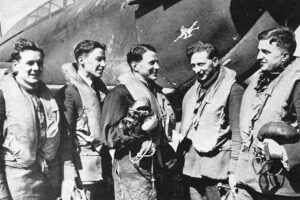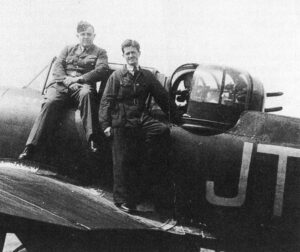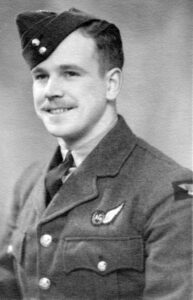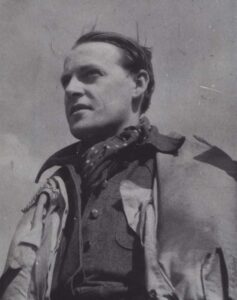Some Members of The Few
This blog is written by Geoff Simpson, a freelance writer who has studied the Battle of Britain for nearly 40 years. He has met, interviewed and corresponded with several hundred of “the Few”
Between July 10 and October 31, 1940, nearly 3000 aircrew flew with RAF Fighter Command and, in 1945, became eligible to wear the much-desired Battle of Britain Clasp. The dates are somewhat arbitrary but cover the key period when the German air force sought air superiority over southern England and the English Channel as a prelude to a possible invasion. Following a speech by the then prime minister, Winston Churchill, these Fighter Command fliers from a variety of countries became known as “the Few”.
This blog gives four examples of members of the Few with Greater Manchester connections.
Jimmy
One who hailed from Manchester, Chorltonville to be precise, was Sergeant James Alan Buck, born in 1916 and the youngest of five sons of Ellen and William Alexander Buck. Mr Buck was a minister in the Catholic Apostolic Church.

Jimmy Buck was a pre-war member of the Royal Air Force Volunteer Reserve. Sadly, his operational career, as a Hawker Hurricane pilot, was brief. In February 1940 Sergeant Buck joined No 43 Squadron. He flew into action during the Battle of France. On July 19 the squadron was based at Tangmere, Sussex and the Battle of Britain had just started. Over the sea, off Selsey, after combat with German fighters, Jimmy Buck baled out wounded. British air sea rescue facilities were primitive at the time, and he drowned. He is buried in Stretford cemetery with his parents.
In October 1939 he had married Rene Broadbent at Barton. In February 1941 Mrs Buck gave birth to their daughter.
Jumbo
Edward Christopher Deanesly, known as Christopher, although he became “Jumbo” in the RAF, was the son of a surgeon from Wolverhampton but he wrote himself a part in the wartime history of Greater Manchester. He was a Spitfire pilot in the Battle of Britain and is probably the only British pilot to be shot down twice into the Channel during the Battle and survive.

On the night of May 7/8, 1941, the ebullient Flight Lieutenant Deanesly was in charge of a Boulton Paul Defiant two-seater night fighter, based at Squires Gate, Blackpool. His air gunner was another Battle of Britain veteran, Flight Sergeant Jack Scott from New Zealand. They downed a German Heinkel bomber, the crew baled and became prisoners. The aircraft crashed on the edge of Hazel Grove, with the crew coming down by parachute across Hazel Grove, Bramhall and Cheadle. Deanesly and Scott both survived the war.
Lucky
Kenneth Roy Lusty was born in Sale in 1920 and worked in Manchester before the war, in shipping, with a cotton firm. The day after hostilities broke out, he joined the RAF to train as an air gunner. He qualified for the Battle of Britain Clasp flying in Bristol Blenheims. His RAF nickname was “Lucky”, acquired after a German bullet passed through his sleeve without wounding him.

In later life Ken Lusty was determined that people should realise that not all of the Few were pilots. I was at a dinner when he rose to his feet, furiously, in the middle of the main speech, to reprimand the speaker for referring to “Battle of Britain pilots”. Ken died in 2009.
Pete
Peter Malam “Pete” Brothers was a small man who made a major impact during the aerial fighting in 1940, as a senior pilot on two Hurricane squadrons. He was born in Prestwich in 1917, into a family that ran a chemical business in Trafford Park, and attended North Manchester School. Peter was still in his teens when his father financed flying lessons for him.

At 18 Peter was commissioned in the RAF. After the Second World War began, he quickly ran up a significant score of German aircraft, even though he does not seem to have been assiduous in making claims. One of his achievements was to play a leading part in turning round the fortunes of a badly demoralised squadron.
Later in the war, Pete Brothers had the prestigious job of leading the Tangmere Wing of fighters. He was much decorated and eventually retired from the RAF in 1973 as an Air Commodore.
Interviewed in the 1980s Pete Brothers, who died in 2008, recalled the advice given to him by the First World War “ace”, “Taffy” Jones, that he would be frightened in combat but should remember that his opponent was twice as frightened.
“I figure Taffy Jones saved my life – many times over,” said Brothers.







